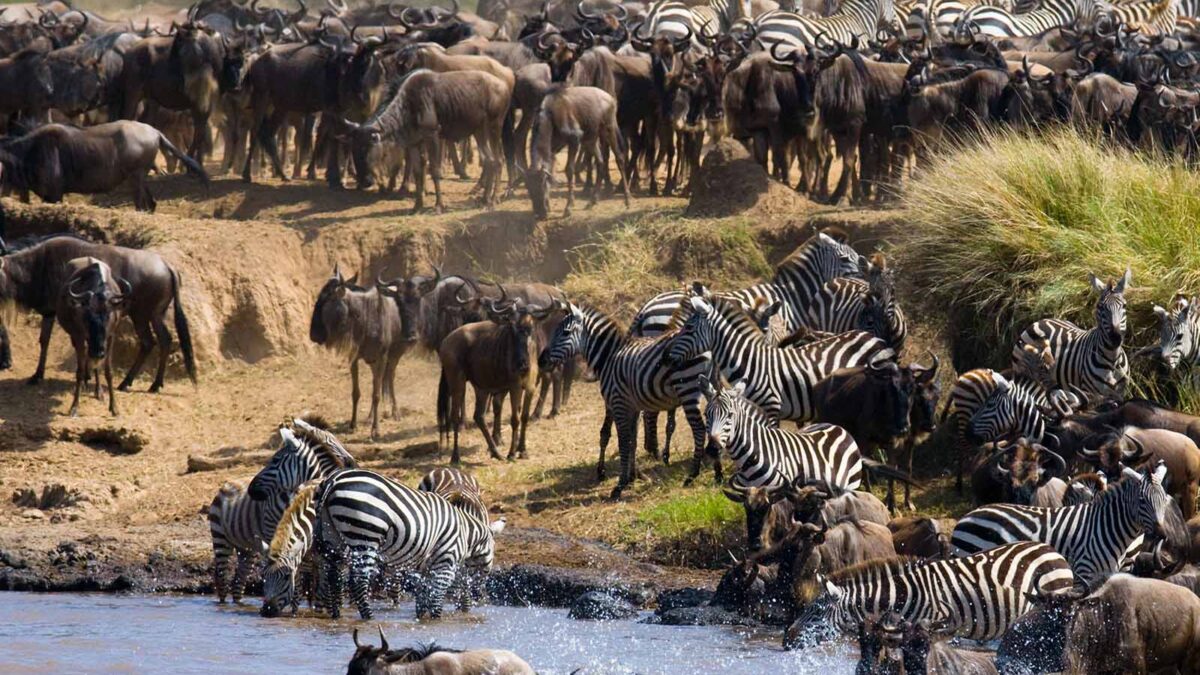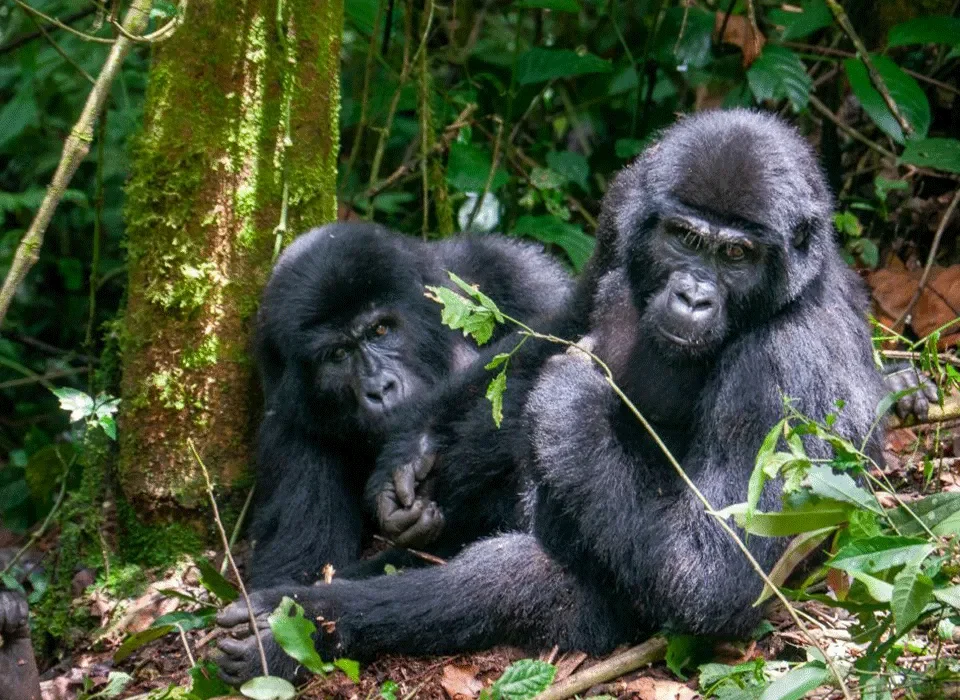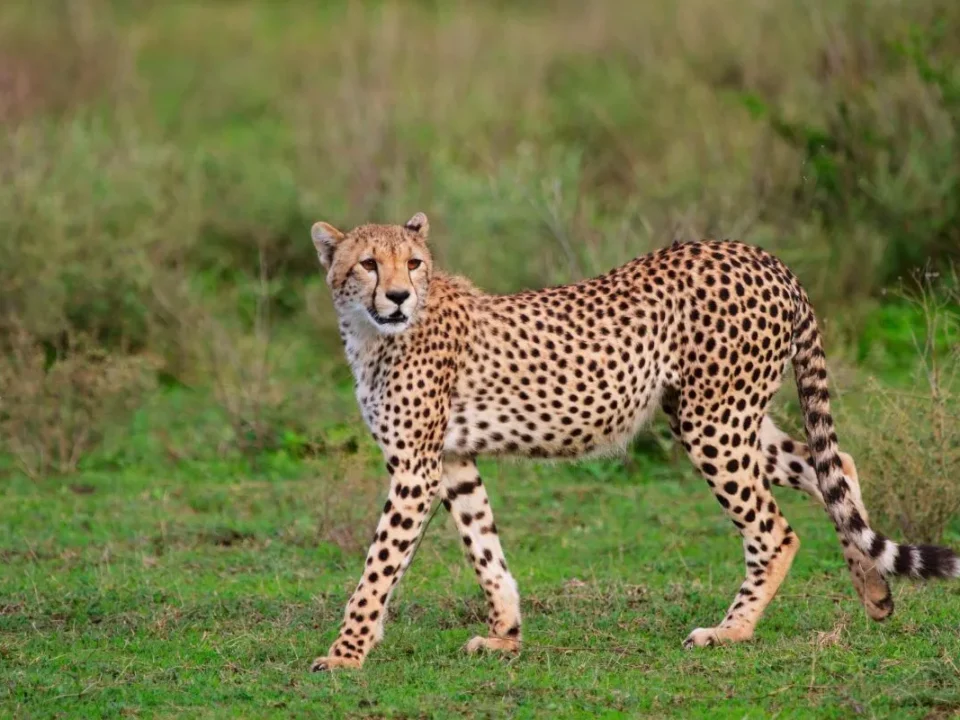Great Wildebeest Migration Safari in Tanzania

Safari Tours to Serengeti National Park in Tanzania
September 29, 2023
African Safari Travel Insurance
September 29, 2023Embark on a Mesmerizing Journey: The Great Wildebeest Migration Safari in Tanzania
Discover the Great Wildebeest Migration Safari in Tanzania — The awe-inspiring Great Wildebeest Migration is a natural wonder that involves approximately 2 million animals, primarily wildebeest but also zebras and gazelles, as they embark on a remarkable journey through two of Africa’s most extraordinary safari destinations. This annual spectacle commences in the southern plains of Tanzania’s Serengeti National Park and unfolds northwards, crossing the western expanse into Kenya’s Masai Mara, only to return once more to the Serengeti. Covering an astonishing distance of about 1,800 miles, this migration of such vast numbers of animals is a phenomenon that makes these destinations truly iconic.
Exploring Serengeti National Park in Tanzania:
Situated just 208 miles from Arusha in northern Tanzania, Serengeti National Park is renowned for being home to a diverse array of wildlife, boasting the highest concentration of mammals on Earth. While it is famously known for its wildebeest population, you’ll also encounter lions, zebras, giraffes, buffalos, cheetahs, hyenas, hippos, and around 518 bird species within this pristine wilderness. Masai Mara, on the other hand, is one of Africa’s most spectacular safari destinations, receiving consistent rainfall that nourishes lush vegetation and attracts large herds of herbivores, including wildebeest and more. These herbivores, in turn, become prey for the park’s carnivores, such as lions, leopards, cheetahs, and hyenas. Additionally, the park is home to elephants, giraffes, buffalos, hippos, zebras, and approximately 500 bird species.
Understanding the Wildebeest Species:
Within the context of the Great Wildebeest Migration, there are several species of wildebeest to be aware of. In the southern region of the Zambezi River, you’ll find the Blue or brindled wildebeest. In the eastern part of the Gregory Rift Valley, spanning Kenya and Tanzania, resides the Eastern white-bearded wildebeest. Lastly, the Western bearded wildebeest is the variety most frequently witnessed during their journey through Serengeti and Masai Mara.
The Migration’s Driving Forces:
The Great Wildebeest Migration is primarily prompted by the seasonal shifts in the availability of water and grass. As the southern Serengeti experiences a drying of its water sources and depletion of grass, the animals instinctively begin their journey towards Masai Mara in search of sustenance. The herds travel in massive groups but exhibit remarkable cooperation as they wait for each other when they arrive at the formidable Grumeti River. While crossing the river, some fall prey to crocodiles, while others become targets for the carnivores in Masai Mara. Some simply perish due to hunger and thirst on the arduous route, while others succumb to exhaustion. As the movement hinges on the presence of food and water, the migration’s precise timing is not entirely predictable. Nevertheless, the animals often reach Masai Mara around July.
The Best Time and Locations to Witness the Migration
January to March:
During these months, vast herds of wildebeest and zebras can be found in the Ngorongoro Conservation Area, Ndutu, and the southern Serengeti. This period coincides with the calving season, where wildebeest cows give birth on the short, nutrient-rich plains in these regions. The area offers excellent grazing opportunities, but it’s also prime hunting territory for predators.
April to May:
From late March to early May, witnessing large populations of wildebeest and other animals becomes challenging due to Tanzania’s heavy rainfall, resulting in tall grass and challenging road conditions. However, staying at Kasini Camp, Ndutu Safari Lodge, Serengeti Kati Kati Camp, or Osupuku Safari Lodge may offer opportunities to view the migration.
June:
In June, more wildebeest herds depart from the southern Serengeti to seek food and water in the western and central Serengeti. They gather near the south of the Grumeti River, where the river’s channels slow down their movement. The surrounding forest is home to elephants and other wildlife, and the river itself harbors crocodiles, offering a dramatic spectacle as wildebeest cross.
July to August:
As the grass near the Grumeti River diminishes, wildebeest cross the river and continue their northward journey. Some move through the central Serengeti, while others traverse the Grumeti Reserve and Ikorongo before eventually crossing into the Masai Mara National Reserve. During this phase, visitors can observe the migration at Singita Grumeti Reserve.
September and October:
The wildebeest herds split into smaller groups during these months, with approximately half remaining in the northern Serengeti and the rest crossing the Mara River into the Masai Mara National Reserve. Arriving during the dry season, they gather around the riverbanks to drink, becoming vulnerable to crocodile attacks.
October:
This month is ideal for witnessing the migration in the northern Serengeti and the southern Masai Mara National Park. In addition to the remarkable wildlife, take the opportunity to interact with the local Masai communities and explore their culture and way of life.
November and December:
With the onset of rain in November, the animals graze extensively before gradually moving southward from the Masai Mara to the east, returning to areas with fresh grass in the Serengeti. By December, the wildebeest return to the southern Serengeti, where they enjoy the lush, tender grasses in the northeast of the park. Calving season begins at the end of January.
Plan a Combined Tour:
The Great Wildebeest Migration Safari in Tanzania offers a captivating experience, but it can be combined with other activities to create a well-rounded adventure. Consider incorporating community visits to immerse yourself in local culture, embark on guided nature walks, explore pristine beaches, savor bush dining, and more. Consult with us for remarkable safari experiences.
How to Reach the Migration:
Predicting the exact timing of the wildebeest migration can be challenging due to the variability of seasons from year to year. However, organizing your journey with Trek Africa Expeditions ensures smooth planning and the best possible migration experience.
Via Kenya: It’s easier to reach the wildebeest destinations, Serengeti National Park and Masai Mara, by passing through Kenya. Fly to Jomo Kenyatta International Airport and connect to Nairobi for a domestic flight to Masai Mara, a journey of approximately 167 miles northwest of Nairobi. Alternatively, you can opt for a 5-hour road trip to Masai Mara. Ensure you have a yellow fever migration card, visa, and passport when preparing for your safari.
Directly to Tanzania: If you are heading directly to Tanzania and then on to Serengeti, your journey will start in Arusha. Fly to Kilimanjaro International Airport and proceed with a 46-kilometer drive to Arusha. From there, you can choose to either fly to the park or embark on an 8-hour drive to reach Serengeti National Park.
Preparing for Your Safari:
To make the most of your 2024-2025 Great Wildebeest Migration Safari, take the time to learn more about the migration, the animals in the parks, and their behaviors. Understanding these aspects will enhance your safari experience. Additionally, research the weather and climate of the region to plan your wardrobe accordingly.
Conclusion:
The Great Wildebeest Migration in Serengeti and Masai Mara is an extraordinary experience found nowhere else on Earth. As these animals embark on their circular migration, encountering various stages of their journey, you can plan your trip based on your specific interests, be it observing the massive wildebeest columns, witnessing congregations at water sources, or experiencing river crossings. This spectacle is often referred to as “the world cup of wildlife” due to the enormous population of migrating animals. It is a captivating display of nature’s wonders, resilience, and survival. Be part of this awe-inspiring journey by booking your safari with Trek Africa Expeditions today.




